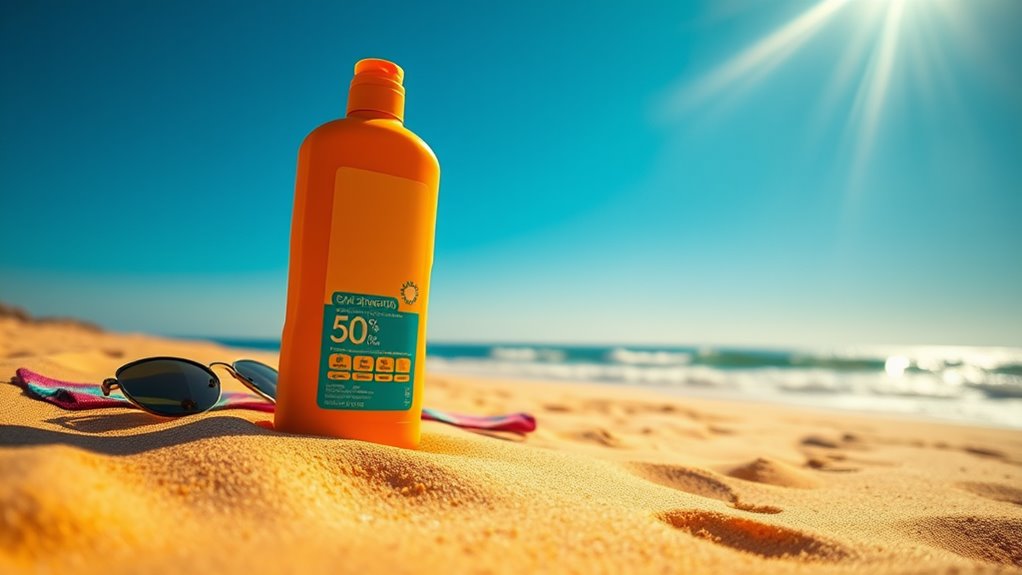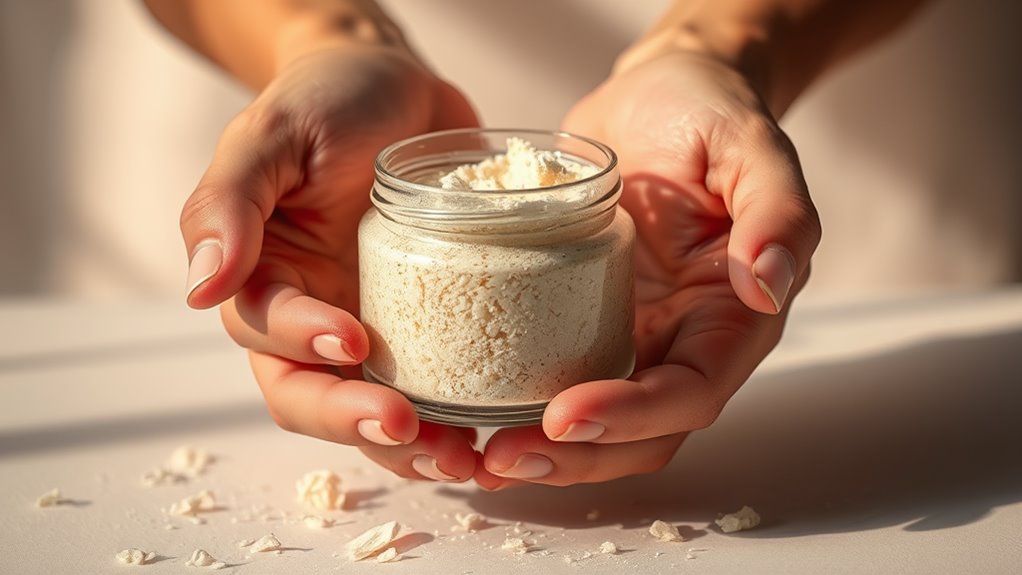You’ll Never Skip Sunscreen Again After Reading This
You won’t want to skip sunscreen again once you know the facts. UV rays can harm your skin, causing premature aging and increasing skin cancer risk—even on cloudy days when 80% still get through! Daily sunscreen creates a vital barrier, preserving your skin’s health and youthful appearance. Plus, common myths about sunscreen could put you at risk. Want to make sure you’re fully protected? There’s more essential information waiting for you!
Key Takeaways
- Daily sunscreen use protects against harmful UV rays, reducing the risk of skin cancer and premature aging.
- Up to 80% of UV rays can penetrate clouds, making sunscreen essential even on overcast days.
- Broad-spectrum sunscreens with at least SPF 30 provide effective protection against both UVA and UVB rays.
- Reapply sunscreen every two hours, or immediately after swimming or sweating, for continuous protection.
- Consistent use helps maintain an even skin tone and prevents dark spots, keeping your skin looking youthful.
The Dangers of UV Rays and Their Impact on Your Skin
When you step outside, even on a cloudy day, UV rays are silently at work, threatening your skin’s health. These invisible rays can penetrate your skin, leading to premature aging, sunburn, and even skin cancer.
You might think it’s safe to skip sunscreen on overcast days, but that’s a dangerous misconception. The importance of sunscreen daily can’t be overstated; it acts as your skin’s first line of defense.
By applying a broad-spectrum sunscreen every morning, you create a barrier against harmful UV radiation. This simple habit protects your skin’s youthful appearance while reducing long-term risks. Additionally, regular sunscreen use has been shown to significantly lower the risk of skin cancer and other serious skin conditions.
Don’t let UV rays dictate your skin’s fate. Embrace the daily ritual of sunscreen application, and you’ll thank yourself later for the proactive choice you made today.
The Science Behind Sunscreen: How It Works
Understanding how sunscreen works is crucial for making informed choices about skin protection.
Sunscreen primarily protects your skin through two mechanisms: physical and chemical. Physical sunscreens contain minerals like zinc oxide or titanium dioxide, which sit on your skin’s surface, reflecting and scattering UV rays. On the other hand, chemical sunscreens absorb UV radiation, converting it into heat and releasing it from your skin.
Both types offer varying degrees of protection, so choosing a broad-spectrum sunscreen with at least SPF 30 is essential.
Remember to apply it generously and reapply every two hours—especially after swimming or sweating. Committing to this practice helps ensure your skin stays healthy while you enjoy the sun, giving you the mastery over your sun protection strategy.
The Long-term Benefits of Daily Sunscreen Use
Daily sunscreen use isn’t just a summer ritual; it’s a long-term investment in your skin’s health. By incorporating sunscreen into your daily routine, you’re not only protecting against sunburns but also reducing the risk of premature aging and skin cancer. Over time, consistent use helps maintain an even skin tone, prevents dark spots, and keeps your skin looking youthful. Additionally, it is crucial to understand that sun exposure is one of the primary causes of dark spots, making sunscreen a vital part of your skincare regimen.
| Benefit | Short-term Effects | Long-term Effects |
|---|---|---|
| Protection | Reduces sunburn risk | Lowers skin cancer risk |
| Anti-aging | Minimizes fine lines | Preserves skin elasticity |
| Even skin tone | Prevents redness | Reduces hyperpigmentation |
Make daily sunscreen a priority, and watch your skin thrive over the years!
Common Myths About Sunscreen Debunked
Although many people recognize the importance of sunscreen, a number of myths persist that can undermine your skin’s protection.
One common belief is that sunscreen isn’t necessary on cloudy days. In reality, up to 80% of UV rays can penetrate clouds, so you should apply it regardless of the weather.
Another myth is that darker skin doesn’t need sunscreen. Everyone, regardless of skin tone, can suffer from UV damage, so don’t skip it!
Some think that SPF 30 is double the protection of SPF 15, but that’s misleading; it’s only slightly more effective.
Lastly, many believe that once applied, sunscreen lasts all day. You need to reapply every two hours—or more often if you’re swimming or sweating.
Don’t let these myths jeopardize your skin health!
Tips for Choosing and Applying Sunscreen Effectively
Knowing the facts about sunscreen is just the first step; selecting and applying it correctly is where the real protection starts.
Choose a broad-spectrum sunscreen with at least SPF 30 to guard against both UVA and UVB rays. Look for water-resistant formulas if you’ll be swimming or sweating.
When applying, use about an ounce—enough to fill a shot glass—to cover your entire body. Don’t forget easy-to-miss areas like your ears, neck, and the tops of your feet.
Apply it 15 to 30 minutes before sun exposure to allow it to absorb effectively. Reapply every two hours, or immediately after swimming or sweating.
Master these tips, and you’ll ensure your skin stays protected and healthy all year round.




